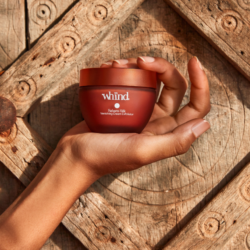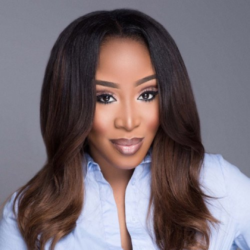Africa’s rich cultural heritage extends far beyond its breathtaking landscapes and vibrant cultures. It is woven with threads of tradition, resilience, and a unique perspective on beauty that is finally captivating the global stage through expressions in literature, entertainment, fine art, fashion, and beauty. For beauty, leading the charge are two iconic hairstyles trending right now – Kipetaka and Koroba – transcending borders and sparking a revolution in how the world sees African beauty aesthetics.
Kipetaka: Madagascar’s Swirling Symphony

Across the African continent on the island of Madagascar, another head-turning hairstyle is captivating the world – the Kipetaka. Also known as “tighbe taka,” this hairstyle features stunning braided swirls that cascade down the head in a mesmerizing dance. The name itself evokes a sense of movement, with “tighbe” translating to “to turn” and “taka” mimicking the rhythmic sound of tapping.

The Kipetaka’s origins are believed to be linked to the island’s rich history and diverse cultural influences from the black aborigines. The intricate braids, often adorned with beads and shells, were seen as a way to express creativity and celebrate individuality. Like the Koroba, the Kipetaka transcended aesthetics, serving as a social marker and a symbol of cultural pride.
Koroba: A Regal Crown of Cornrows
Originating from West and Central Africa, particularly Nigeria, the Koroba hairstyle is a breathtaking display of hair artistry. Its name, derived from the Yoruba word “kuroba atimole,” translates to “crown basket woven downwards” and can be traced back to the ancient Oyo empire. Imagine intricate cornrows meticulously woven from the crown of the head, cascading down in a regal pattern. The intricate braiding techniques not only add a touch of elegance but also serve a practical purpose, offering protection for natural hair.

The origins of Koroba and other similar hairstyles are steeped in tradition. It wasn’t merely a hairstyle; it was a cultural statement, a symbol of heritage passed down through generations. Variations existed within families, each intricate pattern holding a special meaning or signifying social status. According to Prof. Bolanle Awe a former Director of the Institute of African Studies, University of Ibadan, hair is a central point in Yoruba beliefs and hairstyles once served religious purposes as well as indicating identification of ethnic origins, age, political power, ceremony, occupation or mood.

Theses hairstyles function as a means of beautification, communication, mark of initiation and marital status for women. For example, a style from the forehead which ends at the back of the neck showed that the wearer was married, whereas hairstyles woven from right to the left were adorned by single women. The intricate braiding techniques themselves were a testament to the skill and artistry of hairstylists, often seen as respected members of the community.
More Than Just Hairstyles: A Cultural and Beauty Renaissance

The global rise of Koroba and Kipetaka signifies more than just a newfound appreciation for African aesthetics. It marks a cultural and beauty renaissance, a reclaiming of narratives and a celebration of African heritage on the world stage.
For decades, Eurocentric beauty standards dominated the global conversation. African features and hairstyles were often deemed “unconventional” or even “unattractive.” The rising popularity of Koroba and Kipetaka signifies a shift in this paradigm. These intricate braided styles are not merely being appreciated; they are being celebrated for their beauty, complexity, and cultural significance.
Empowering a Continent Through Beauty
This newfound appreciation for African hairstyles goes beyond aesthetics. It empowers a continent rich in cultural heritage and tradition. African hairstylists and hair artists, the custodians of these intricate braiding techniques, are finally gaining the recognition they deserve. Social media platforms are abuzz with tutorials showcasing these styles, fostering a sense of community and cultural exchange.
This renaissance extends beyond hairstyles. African-owned beauty brands utilizing indigenous ingredients and catering to the specific needs of African hair and skin are gaining traction. Local makeup artists are challenging traditional beauty standards and promoting a more inclusive vision of beauty.
The Future of African Beauty
The rise of Koroba and Kipetaka is just the beginning. Africa’s beauty industry is poised for a remarkable evolution. With a growing middle class, a rising appreciation for local products, and a renewed sense of cultural pride, the continent is emerging as a global beauty powerhouse.
This shift has far-reaching implications. It empowers African entrepreneurs, fosters innovation within the beauty industry, and creates a global platform for celebrating African diversity and beauty. As the world embraces the intricate braids of Koroba and the swirling artistry of Kipetaka, it’s a clear sign that Africa’s beauty revolution has arrived, and it’s here to stay.
So, the next time you see a Koroba or Kipetaka gracing a magazine cover or gracing your social media feed, remember that it’s more than just a hairstyle. It’s a symbol of AFRICA reclaiming its narrative, celebrating its heritage, and rewriting the definition of beauty on a global scale.
Image do not belong to Beautylist




